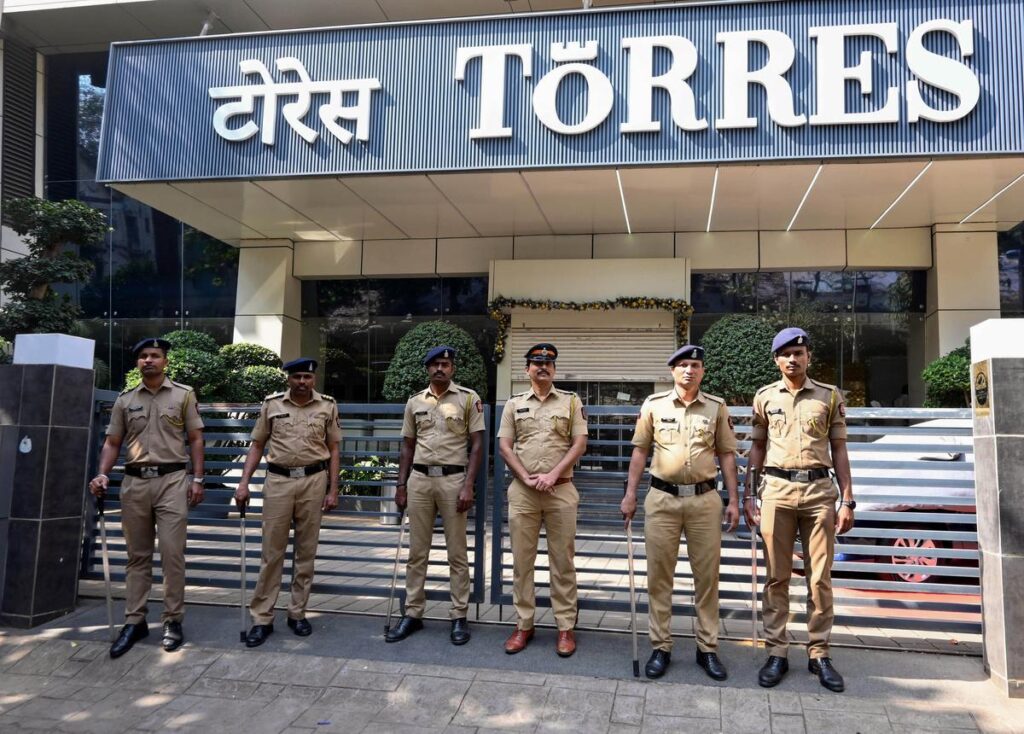Cryptocurrency Ponzi Schemes: How a Nationwide Fraud Network Stole ₹350 Crore from Indian Investors
Introduction In one of India’s largest cryptocurrency frauds, investors across the country lost a staggering ₹350 crore to an elaborate

India’s financial sector faced another jolt with the exposure of the Torres Scam, a sophisticated financial fraud that resulted in an estimated loss of ₹22 crore.
This scam not only shook investors and authorities but also revealed serious vulnerabilities in financial oversight mechanisms. Here’s a full breakdown of what happened, how the scam worked, who suffered, and how you can protect yourself.
The Torres scam was orchestrated by a network of fraudulent financial operators posing as legitimate investment firms or advisory services:
Fake financial advisors promised high returns on investments.
Shell companies were created to route and launder money.
Well-dressed, well-spoken representatives added an aura of legitimacy, deceiving even cautious investors.
Early investigations suggest that some insiders from legitimate financial services sectors might have colluded to bypass normal scrutiny.
(Source: Business & Finance News)
The fraud was carried out using a typical “too good to be true” formula:
Promise of High Returns: Victims were lured with guaranteed returns — sometimes as high as 15% to 20% per month — an unsustainable promise.
Fake Investment Opportunities: Scammers offered investments in real estate, forex trading, and international projects linked to “Torres Group” — none of which existed.
Document Forgery: Investors were shown fake agreements, contracts, and payment guarantees.
Initial Small Payouts: Early investors received small returns to build trust and encourage larger investments — a classic Ponzi scheme technique.
Pressure Tactics: Victims were urged to “invest quickly” to avail special bonuses or prevent missing “exclusive deals”.
Once sufficient money was collected, the scammers disappeared, leaving behind frozen bank accounts, shell companies, and confused investors.
Total Loss: Estimated at ₹22 crore as per preliminary reports.
Victims: Individuals, small business owners, and even some mid-sized enterprises were duped.
Geographical Spread: Major cities like Mumbai, Delhi, Bengaluru, and Hyderabad saw the highest victim count.
Cash Seizures: Authorities seized large sums of cash during raids, but full recovery remains unlikely.
Emotional Toll: Many victims lost life savings, retirement funds, or critical business capital.
The Torres Scam is yet another harsh reminder that financial fraud does not discriminate — it targets anyone who trusts blindly.
🛑 Warning Signs to Watch For:
Promises of high guaranteed returns.
Pressure to invest quickly or risk losing an “opportunity.”
Lack of clear, verifiable company background.
Investment structures that are too complicated to explain easily.
✅ Smart Moves:
Always verify if a financial advisor or company is registered with SEBI (Securities and Exchange Board of India) or RBI if applicable.
Be suspicious of any investment scheme promising returns higher than fixed deposit or market returns without corresponding risks.
Insist on written, legally binding documents — and have a lawyer review them.
Never make payments to personal bank accounts in the name of investment.
Golden Rule:
If it sounds too good to be true — it almost certainly is.
Scammers today are more sophisticated than ever — polished websites, fancy offices, and sweet-talking agents are no guarantees of legitimacy.
Before trusting anyone with your money, do thorough due diligence.
And remember:
Never hand over your hard-earned savings without solid proof and legal protections.
Closing Note:
The Torres Scam teaches us that vigilance is not optional — it’s essential. By learning from these cases and staying cautious, we can secure our financial future and deny scammers the opportunity to prey on trust.
Introduction In one of India’s largest cryptocurrency frauds, investors across the country lost a staggering ₹350 crore to an elaborate
Introduction In a widespread financial tragedy affecting households across India, online investment scams have claimed over 100,000 victims and resulted
1. Background of the Alleged Fraudster Name: Khimjibhai Harjivanbhai PatadiaClaimed Profile: Purportedly “the richest person in India,” based in Kandivali,
We believe that by sharing knowledge and raising awareness, we can build a more secure financial future for everyone. Explore our articles, share our content, and join us in the fight against fraud.
Copyright © 2025 40frames – Exposing Fraud, Protecting Indians
We use cookies on our website to give you the most relevant experience by remembering your preferences and repeat visits. By clicking “Accept All”, you consent to the use of ALL the cookies. However, you may visit “Cookie Settings” to provide a controlled consent. Privacy Policy.